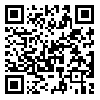Volume 26, Issue 5 (2024)
JAST 2024, 26(5): 973-982 |
Back to browse issues page
Download citation:
BibTeX | RIS | EndNote | Medlars | ProCite | Reference Manager | RefWorks
Send citation to:



BibTeX | RIS | EndNote | Medlars | ProCite | Reference Manager | RefWorks
Send citation to:
Seyedabadi H R, Emrani H. Genetic Variations and Bottleneck Demographic Studies in Kurdish Horse Breed Using 17 Microsatellite Markers. JAST 2024; 26 (5) :973-982
URL: http://jast.modares.ac.ir/article-23-66459-en.html
URL: http://jast.modares.ac.ir/article-23-66459-en.html
1- Animal Science Research Institute of Iran, Agricultural Research, Education and Extension Organization (AREEO), Karaj, Islamic Republic of Iran.
2- Animal Science Research Institute of Iran, Agricultural Research, Education and Extension Organization (AREEO), Karaj, Islamic Republic of Iran. ,h.emrani@areeo.ac.ir
2- Animal Science Research Institute of Iran, Agricultural Research, Education and Extension Organization (AREEO), Karaj, Islamic Republic of Iran. ,
Abstract: (1216 Views)
The Kurdish horse is one of the most valuable and original pure genetic reserves in Iran. According to historical evidence, this breed dates back to more than 2,500 years ago. In this population, genetic variations were analyzed using 17 microsatellite markers recommended by International Society for Animal Genetics (ISAG). Genomic DNAs were extracted from the hair roots of 761 Kurdish horses. DNA fragments were amplified by multiplex PCR reaction using fluorescently labeled primers, and determined by capillary electrophoresis. Average number of alleles per locus was 4.29 (from 6 alleles in HTG7 to 17 alleles in ASB17). The mean value of the observed heterozygosity was 0.721, ranging from 0.491 (HTG7) to 0.838 (VHL20), while expected heterozygosity ranged from 0.523 (HTG7) to 0.839 (VHL20) with a mean of 0.752. The PIC value was from 0.708 (HMS6) to 0.856 (ASB17) with a mean of 0.782. The inbreeding coefficient ranged from -0.012 (ASB2) to 0.183 (HTG6) with a mean of 0.040. Deviation from Hardy-Weinberg equilibrium (P< 0.05) was found in 11 loci. The total exclusion probability of the 17 microsatellite loci was 0.9999. Kurdish horse revealed bottleneck event under two models of microsatellite evolution for sign and standardized differences for Infinite Alleles Model (IAM) and Stepwise Mutation Model (SMM). Based on this study, the effectiveness of 17 microsatellite markers for parentage verification and assignment test of Kurdish horse is confirmed. These results may facilitate conservation programs for the studied breeds and raise preserve their genetic variation.
Article Type: Original Research |
Subject:
Animal Genetics
Received: 2022/12/31 | Accepted: 2023/09/25 | Published: 2024/09/14
Received: 2022/12/31 | Accepted: 2023/09/25 | Published: 2024/09/14
Send email to the article author
| Rights and permissions | |
 |
This work is licensed under a Creative Commons Attribution-NonCommercial 4.0 International License. |








